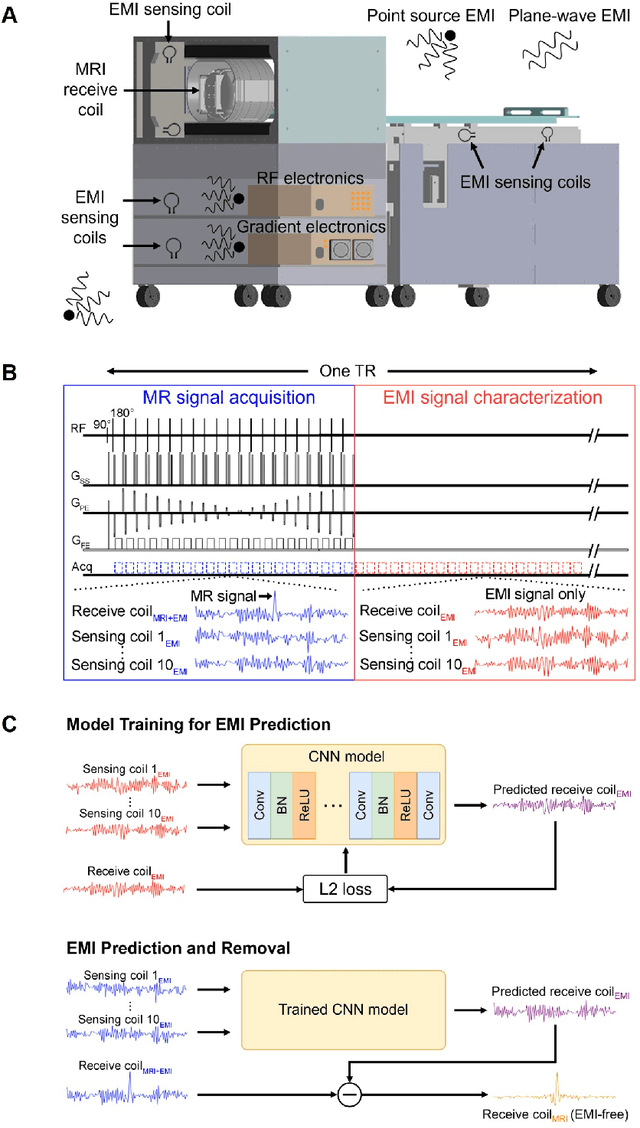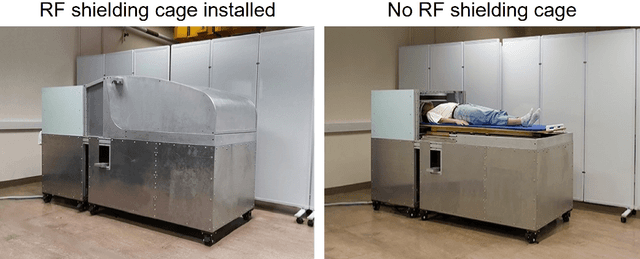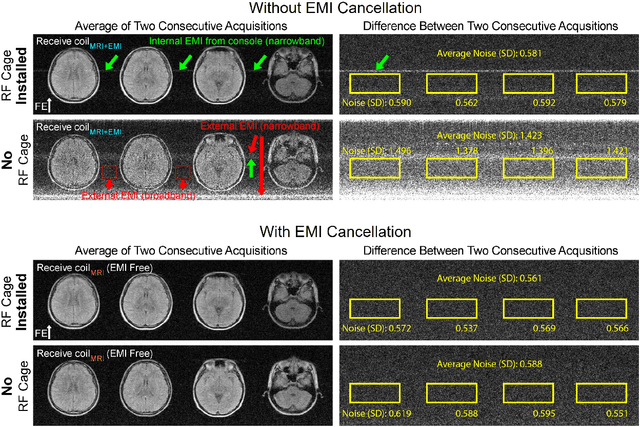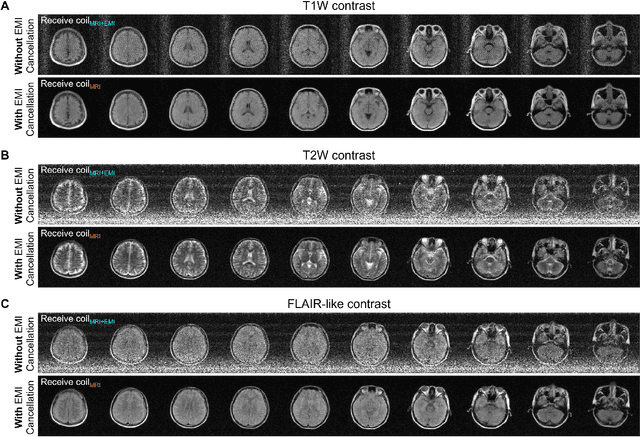Linfang Xiao
Calibrationless Reconstruction of Uniformly-Undersampled Multi-Channel MR Data with Deep Learning Estimated ESPIRiT Maps
Oct 27, 2022Abstract:Purpose: To develop a truly calibrationless reconstruction method that derives ESPIRiT maps from uniformly-undersampled multi-channel MR data by deep learning. Methods: ESPIRiT, one commonly used parallel imaging reconstruction technique, forms the images from undersampled MR k-space data using ESPIRiT maps that effectively represents coil sensitivity information. Accurate ESPIRiT map estimation requires quality coil sensitivity calibration or autocalibration data. We present a U-Net based deep learning model to estimate the multi-channel ESPIRiT maps directly from uniformly-undersampled multi-channel multi-slice MR data. The model is trained using fully-sampled multi-slice axial brain datasets from the same MR receiving coil system. To utilize subject-coil geometric parameters available for each dataset, the training imposes a hybrid loss on ESPIRiT maps at the original locations as well as their corresponding locations within the standard reference multi-slice axial stack. The performance of the approach was evaluated using publicly available T1-weighed brain and cardiac data. Results: The proposed model robustly predicted multi-channel ESPIRiT maps from uniformly-undersampled k-space data. They were highly comparable to the reference ESPIRiT maps directly computed from 24 consecutive central k-space lines. Further, they led to excellent ESPIRiT reconstruction performance even at high acceleration, exhibiting a similar level of errors and artifacts to that by using reference ESPIRiT maps. Conclusion: A new deep learning approach is developed to estimate ESPIRiT maps directly from uniformly-undersampled MR data. It presents a general strategy for calibrationless parallel imaging reconstruction through learning from coil and protocol specific data.
Robust Electromagnetic Interference (EMI) Elimination via Simultaneous Sensing and Deep Learning Prediction for RF Shielding-free MRI
Oct 13, 2022



Abstract:At present, MRI scans are performed inside a fully-enclosed RF shielding room, posing stringent installation requirement and unnecessary patient discomfort. We aim to develop an electromagnetic interference (EMI) cancellation strategy for MRI with no or incomplete RF shielding. In this study, a simultaneous sensing and deep learning driven EMI cancellation strategy is presented to model, predict and remove EMI signals from acquired MRI signals. Specifically, during each MRI scan, separate EMI sensing coils placed in various spatial locations are utilized to simultaneously sample environmental and internal EMI signals within two windows (for both conventional MRI signal acquisition and EMI characterization acquisition). Then a CNN model is trained using the EMI characterization data to relate EMI signals detected by EMI sensing coils to EMI signals in MRI receive coil. This model is utilized to retrospectively predict and remove EMI signals components detected by MRI receive coil during the MRI signal acquisition window. We implemented and demonstrated this strategy for various EMI sources on a mobile ultra-low-field 0.055 T permanent magnet MRI scanner and a 1.5 T superconducting magnet MRI scanner with no or incomplete RF shielding. Our experimental results demonstrate that the method is highly effective and robust in predicting and removing various EMI sources from both external environments and internal scanner electronics at both 0.055 T (2.3 MHz) and 1.5 T (64 MHz), producing final image signal-to-noise ratios that are comparable to those obtained using a fully enclosed RF shielding. Our proposed strategy enables MRI operation with no or incomplete RF shielding, alleviating MRI installation and operational requirements. It is also potentially applicable to other scenarios of accurate RF signal detection or discrimination in presence of external and internal EMI or RF sources.
A Simple Method to improve Initialization Robustness for Active Contours driven by Local Region Fitting Energy
Mar 17, 2018



Abstract:Active contour models based on local region fitting energy can segment images with intensity inhomogeneity effectively, but their segmentation results are easy to error if the initial contour is inappropriate. In this paper, we present a simple and universal method of improving the robustness of initial contour for these local fitting-based models. The core idea of proposed method is exchanging the fitting values on the two sides of contour, so that the fitting values inside the contour are always larger (or smaller) than the values outside the contour in the process of curve evolution. In this way, the whole curve will evolve along the inner (or outer) boundaries of object, and less likely to be stuck in the object or background. Experimental results have proved that using the proposed method can enhance the robustness of initial contour and meanwhile keep the original advantages in the local fitting-based models.
 Add to Chrome
Add to Chrome Add to Firefox
Add to Firefox Add to Edge
Add to Edge